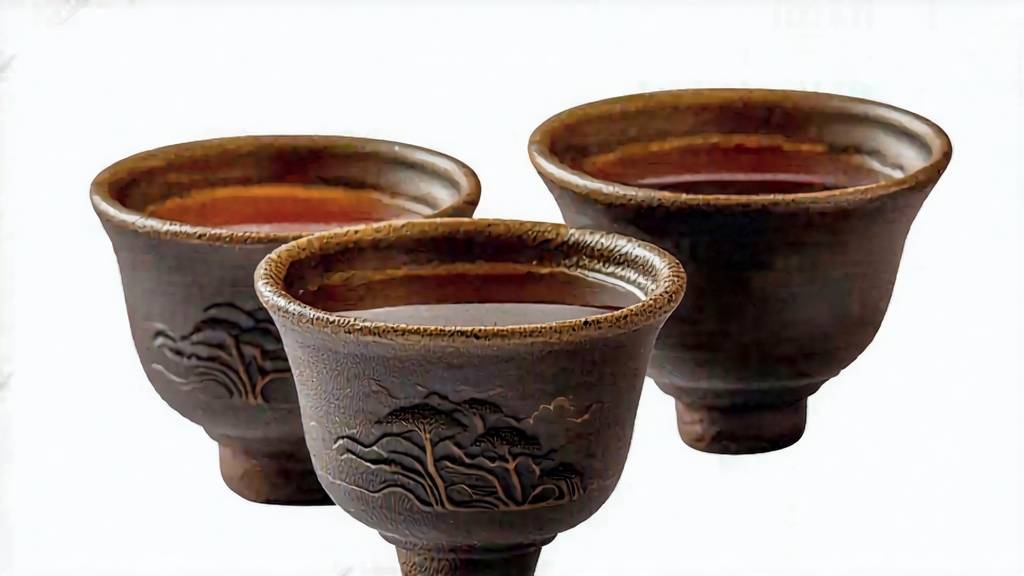
If oolong is the jazz of Chinese tea—improvisational, layered, forever balancing between green freshness and black depth—then Phoenix Dancong from Guangdong is the saxophone solo that makes the whole room fall silent. For eight centuries this “single-bush” tea has been coaxing perfumed melodies out of one rocky ridge in the coastal province, and today it is quietly conquending the palates of specialty drinkers from Brooklyn to Berlin. What follows is a complete traveler’s brief to the mountain, the leaf, the fire, and the cup.
-
A mountain that forgot to stop rising
The Phoenix (Fenghuang) range rises straight out of the subtropical haze of Chaozhou prefecture, granite spines wrapped in cloud forest. Between 350 m and 1,300 m, the slopes tilt so steeply that farmers still climb with rope baskets on their backs; the soil is a mineral-rich mix of weathered igneous rock and leaf mold so thin that roots grip stone rather than earth. These stressed vines of tea behave like alpine herbs: they produce fewer leaves, but each leaf fills itself with aromatic oils as a chemical memo to future generations. More than eighty genetically distinct Dancong cultivars have been identified here, every tree a micro-varietal pruned to live 100, even 300 years. Locals like to say the mountain has “a thousand fragrances,” and the tea is expected to recite them. -
From Song tribute to post-modern icon
During the Southern Song (1127-1279) imperial examiners stationed in nearby Chaozhou city recorded “bird-beak tea” from Phoenix ridge among the region’s tributes. The name Dancong—“single-bush”—appears first in Ming gazetteers, describing the practice of picking each notable tree separately so that its unique scent could be presented to the magistrate. By late Qing the tea rode clippers to Southeast Asia, where Chaozhou merchants had founded banks, pawnshops, and eventually whole city quarters in Bangkok and Singapore. In 1956 a state-owned farm catalogued the mother trees, assigning them romantic labels—Almond Fragrance, Ginger Flower, Night-Blooming Jasmine—that still read like a botanical perfume counter. When China opened its economy in the 1980s these names traveled back with returning overseas Chinese, and Phoenix Dancong entered the global specialty renaissance. -
Varieties: a library of scents
Strictly speaking, “Dancong” should mean tea from one specific tree, but commerce now uses the term for any Phoenix oolong sharing a recognized aroma profile. The eight classic “fragrance types” are:- Huangzhi Xiang (orange blossom)
- Xingren Xiang (almond)
- Zhilan Xiang (orchid)
- Yulan Xiang (magnolia)
- Meizhan Xiang (bay leaf & honey)
- Youhua Xiang (pomelo flower)
- Jianghua Xiang (ginger lily)
- Dafu Ye (big-leaf, lychee & peach)
Above 800 m the old trees qualify as “high-mountain” (gaoshan); below that, terraces of cloned bushes give “low-mountain” leaf that is still sold as Dancong but lacks the mineral spine. The most coveted lots come from three legendary villages—Wudong, Shiqiao, and Zhongxin—where overnight temperatures drop 10 °C, locking sweetness into the leaf.
- Craft: the 24-hour perfume factory
Harvest begins at dawn on a clear day in late April when two leaves and a bud are plucked by fingertip, never fingernail, to avoid oxidation-stimulating bruises. The baskets must reach the village workshop by 10 a.m.; from here the leaf has roughly one day to be transformed from living greens into an arid, fragrant twist that can travel the world without losing its soul.
Step 1: Withering
Leaves are spread on bamboo racks set outside in shade; every fifteen minutes they are tossed by hand to encourage water loss and grassy-volatile dissipation. Sun-withering lasts only twenty minutes—just long enough for the edges to feel parchment-dry while the veins remain rubbery.
Step 2: Bruising (yaoqing)
The leaf is piled 5 cm deep into round sieves and shaken with a rotary motion that cracks cell walls along the midrib. This is where the mountain’s microbi